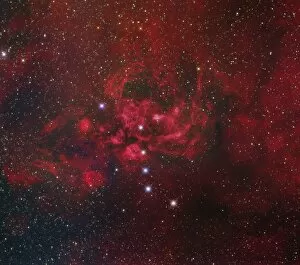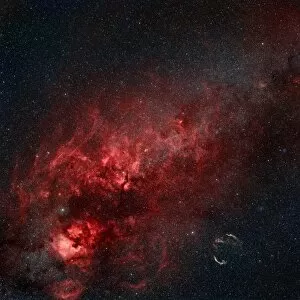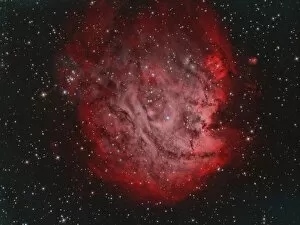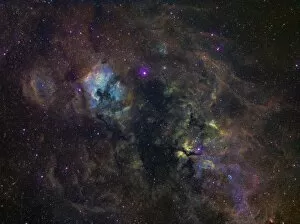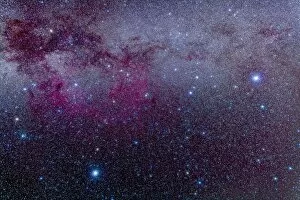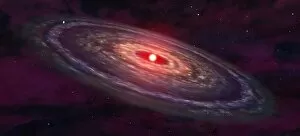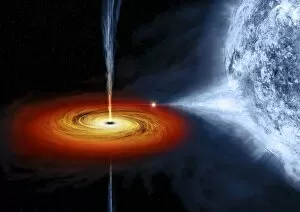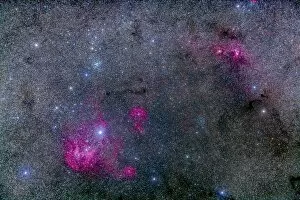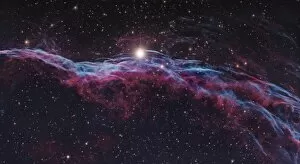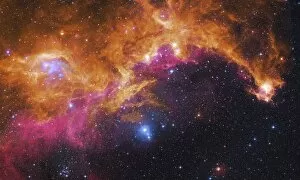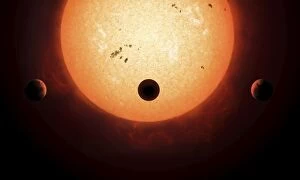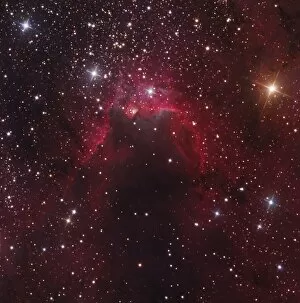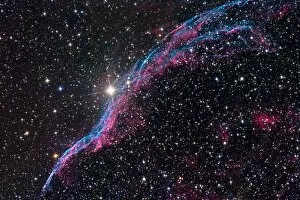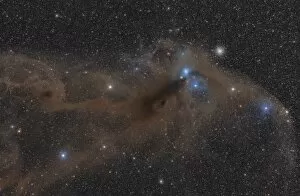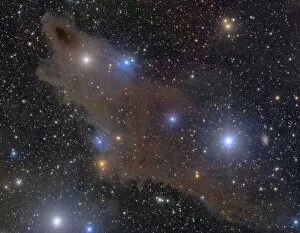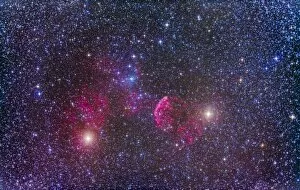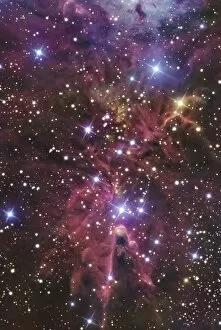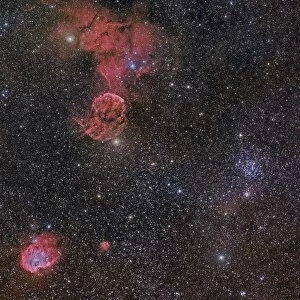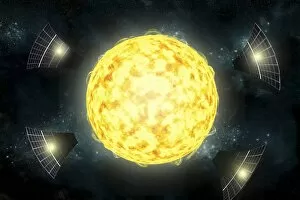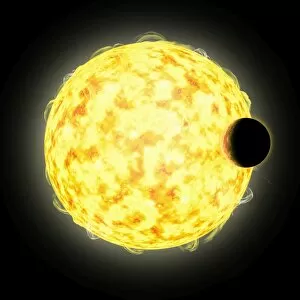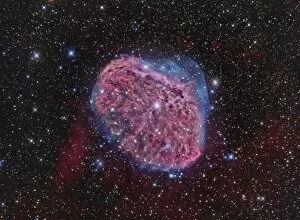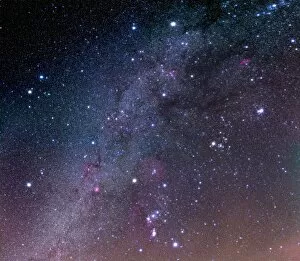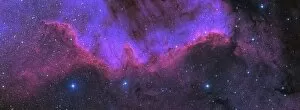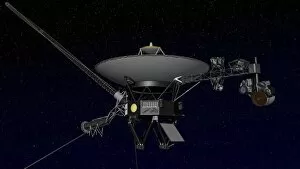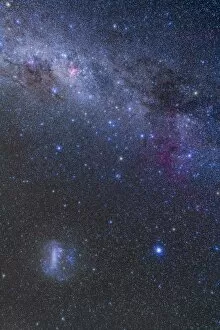Interstellar Medium Collection (#2)
The interstellar medium, a vast expanse of gas and dust that fills the space between stars, is a captivating realm that holds countless wonders
For sale as Licensed Images
Choose your image, Select your licence and Download the media
The interstellar medium, a vast expanse of gas and dust that fills the space between stars, is a captivating realm that holds countless wonders. In the heart of Serpens lies M16, better known as The Eagle Nebula, where towering pillars of gas and dust stretch towards the heavens like celestial skyscrapers. Within these majestic structures, new stars are born, their brilliant light illuminating the surrounding cosmos. Venturing further into the depths of space, we encounter IC 2177 - The Seagull Nebula. Here, ethereal clouds dance in cosmic harmony as they give birth to yet more stellar marvels, and is within this nebula that Voyager 1 spacecraft made history by crossing into interstellar space, becoming humanity's first emissary to venture beyond our solar system. But it is not only grandeur and birth that awaits us in this enigmatic domain; destruction also has its place. The Vela supernova remnant at the center of Gum Nebula serves as a haunting reminder of cataclysmic events that shape our universe. Its remnants tell tales of ancient explosions and violent forces unleashed upon unsuspecting celestial bodies. As we journey through this cosmic tapestry, we come across breathtaking sights such as NGC 6523 - The Lagoon Nebula - with its vibrant hues painting an otherworldly canvas against the backdrop of darkness. Nearby lies The Fox Fur Nebula; its wispy tendrils resembling an artist's brushstrokes on a galactic masterpiece. In regions like Tarantula Nebula star formation takes center stage – a spectacular display where massive clouds collapse under gravity's embrace to form new suns amidst swirling gases and glowing embers. And then there are phenomena like Zeta Ophiuchi bow shock – an infrared image capturing the moment when fast-moving star Zeta Ophiuchi creates ripples in interstellar material around it akin to waves crashing on distant shores.

